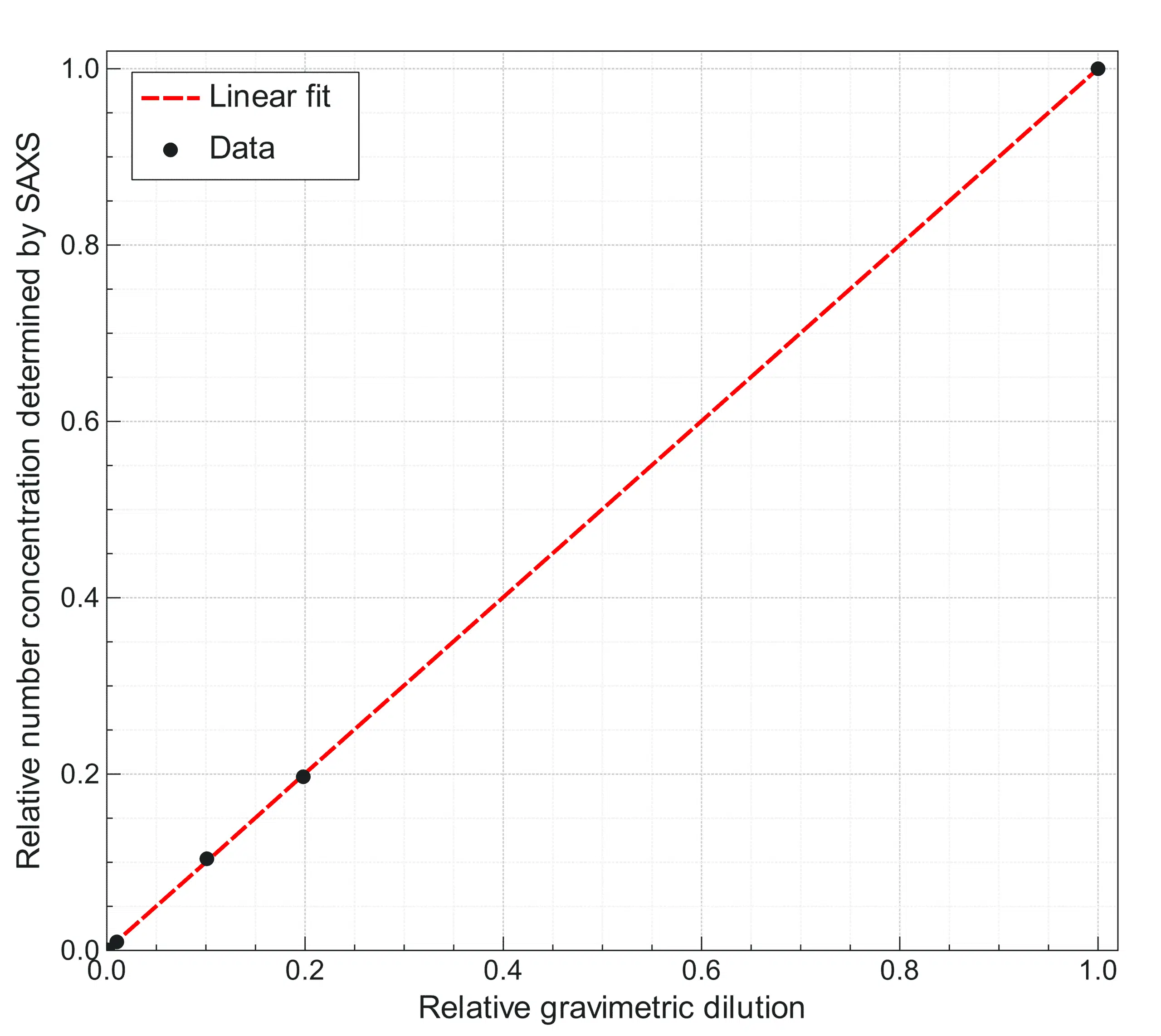SAXS laboratory instruments provide traceable number concentration measurements for nanoparticles.
Introduction
Nanoparticles (NPs) are an essential building block for the development of new materials with improved properties, e.g. optical, thermal or mechanical.[1] Parameters such as the particle size, shape and concentration must be carefully controlled to comply with performance, cost and safety requirements. SAXS is a well-established technique for traceable size measurements.[2,3,4] Recently, it was also shown that number concentrations of NPs could be reliably determined from SAXS data collected at synchrotron facilities with metrological traceability to the standard system of units (SI).[5] We demonstrate in this Application Note that traceable number concentrations can also be obtained using a SAXS laboratory setup with acquisition times of 10 min. […]
Measurements
A certified concentration standard from LGC (colloidal dispersions of citrate-stabilized gold NPs, modal diameter 30.7 nm, number concentration 1.47E11±2.8E10 particles per mL, product code LGCQC5050)[6] has been measured as-received and in dilution series. The measurements were done on a Nano-inXider instrument in a flowcell, whose thickness was determined from the transmission value. […]

Figure: Colloidal dispersion of gold NPs with certified concentration measured as received and in dilution series. Relative number concentration determined from the SAXS profile as a function of the relative dilution determined gravimetrically when preparing the dilution.
[1] S. Logothetidis, Nanostructured Materials and Their Applications, Springer, 2012.
[2] G. Gleber, L. Cibik, S. Haas, A. Hoell, P. Müller and M. Krumrey, “Traceable size determination of PMMA nanoparticles based on Small Angle X-ray Scattering (SAXS),” Journal of Physics: Conference Series, vol. 247, p. 012027, 2010.
[3] F. Meli, T. Klain, E. Buhr, C. G. Frase, G. Gleber, M. Krumrey, A. Duta, S. Duta, V. Korpelainen and R. Bellotti, “Traceable size determination of nanoparticles, a comparison among European metrology institutes,” Measurement Science and Technology, vol. 23, p. 125005, 2012.
[4] B. Pauw, C. Kästner and A. Thünemann, “Nanoparticle size distribution quantification: results of a small-angle X-ray scattering inter-laboratory comparison.,” Journal of Applied Crystallography, vol. 50, pp. 1280-1288, 2017.
[5] A. Schavkan, C. Gollwitzer, R. Garcia-Diez, M. Krumrey, C. Minelli, D. Bartczak, S. Cuello-Nuñez, H. Goenaga-Infante, J. Rissler, E. Sjöström, G. B. Baur, K. Vasilatou and A. Shard, “Number Concentration of Gold Nanoparticles in Suspension: SAXS and spICPMS as Traceable Methods Compared to Laboratory Methods,” Nanomaterials, vol. 9, no. 4, p. 502, 2019.

































